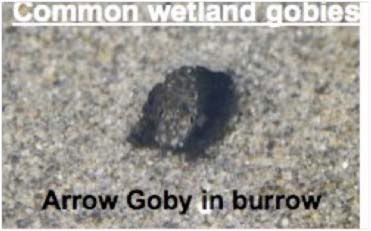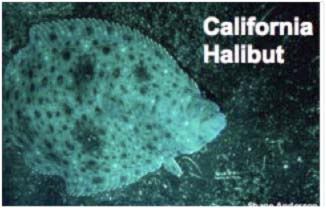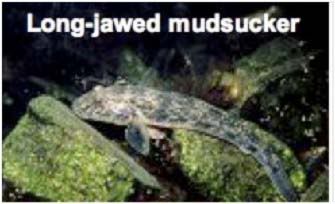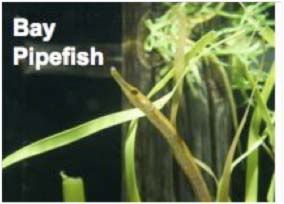San Dieguito River Park
- 11 -
Fish of the Lagoon

The San Dieguito River flows down from Volcan Mountain to the ocean carrying with it necessary nutrients for marine life. The ocean water then flows inward creating different specialized habitats of the lagoon. This mixing of fresh and salt water creates what is called brackish water. Habitat types vary according to temperatures, salinity, oxygen levels and sea bottom substrate types. The marine life within the lagoon all thrive in different habitat types. The channels and basin within the Lagoon create a safer environment for juvenile fish, providing food, habitat, and protection from predators. Since the onset of the restoration project, wetland fish populations have significantly increased in numbers and diversity.
Over twenty different fish species have been observed in the Lagoon. Juveniles of a number of these species, including: California Halibut, Giant Kelp fish, Kelp Bass, Staghorn Sculpin and four species of Gobies have been observed, providing evidence that the lagoon habitats created within the San Dieguito River Park do act as a fish nursery.
Fish play a critical role in the food web by eating algae, plankton plants and small invertebrates such as shrimps, crabs, snails, clams, and worms. The smaller fish are consumed by larger fish, which are in turn preyed upon by numerous fishing birds, including great blue herons, several species of terns, including the endangered California least tern, ospreys, and kingfishers. Fish may also play a role in recycling nutrients that they derive from plankton in the water column and from invertebrates (clams, snails and worms) that live in and on the bottom.

















.
